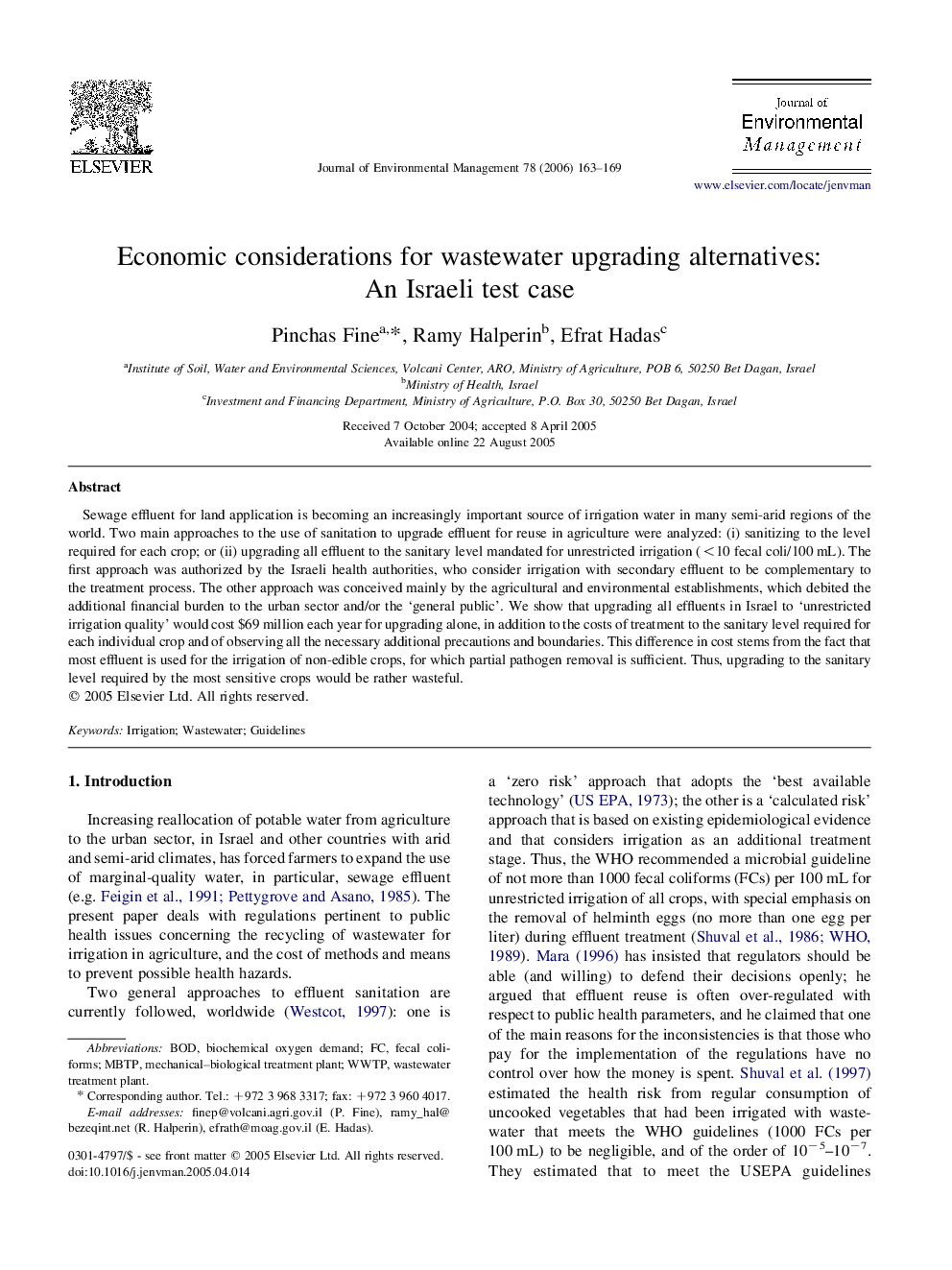| Article ID | Journal | Published Year | Pages | File Type |
|---|---|---|---|---|
| 1058524 | Journal of Environmental Management | 2006 | 7 Pages |
Abstract
Sewage effluent for land application is becoming an increasingly important source of irrigation water in many semi-arid regions of the world. Two main approaches to the use of sanitation to upgrade effluent for reuse in agriculture were analyzed: (i) sanitizing to the level required for each crop; or (ii) upgrading all effluent to the sanitary level mandated for unrestricted irrigation (<10 fecal coli/100Â mL). The first approach was authorized by the Israeli health authorities, who consider irrigation with secondary effluent to be complementary to the treatment process. The other approach was conceived mainly by the agricultural and environmental establishments, which debited the additional financial burden to the urban sector and/or the 'general public'. We show that upgrading all effluents in Israel to 'unrestricted irrigation quality' would cost $69 million each year for upgrading alone, in addition to the costs of treatment to the sanitary level required for each individual crop and of observing all the necessary additional precautions and boundaries. This difference in cost stems from the fact that most effluent is used for the irrigation of non-edible crops, for which partial pathogen removal is sufficient. Thus, upgrading to the sanitary level required by the most sensitive crops would be rather wasteful.
Keywords
Related Topics
Physical Sciences and Engineering
Energy
Renewable Energy, Sustainability and the Environment
Authors
Pinchas Fine, Ramy Halperin, Efrat Hadas,
